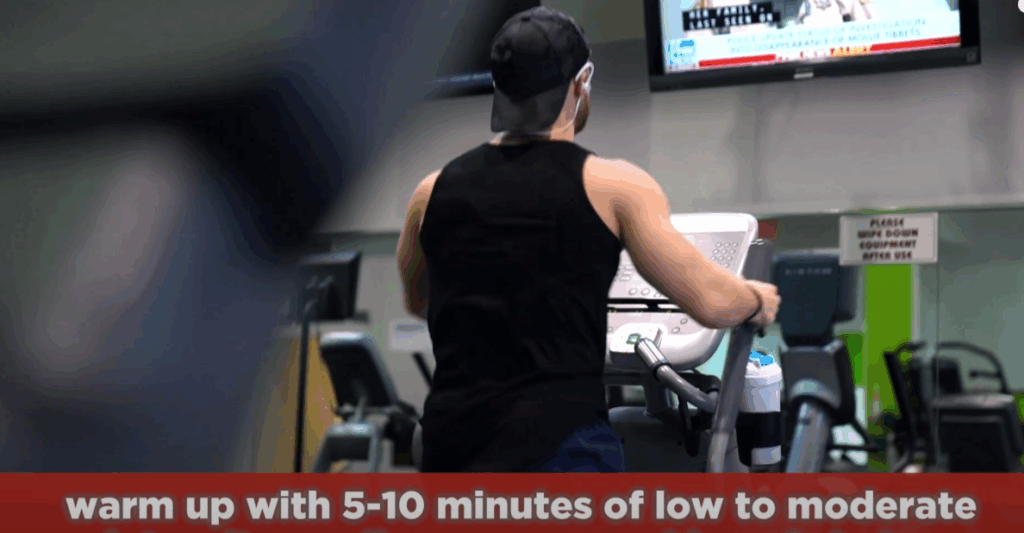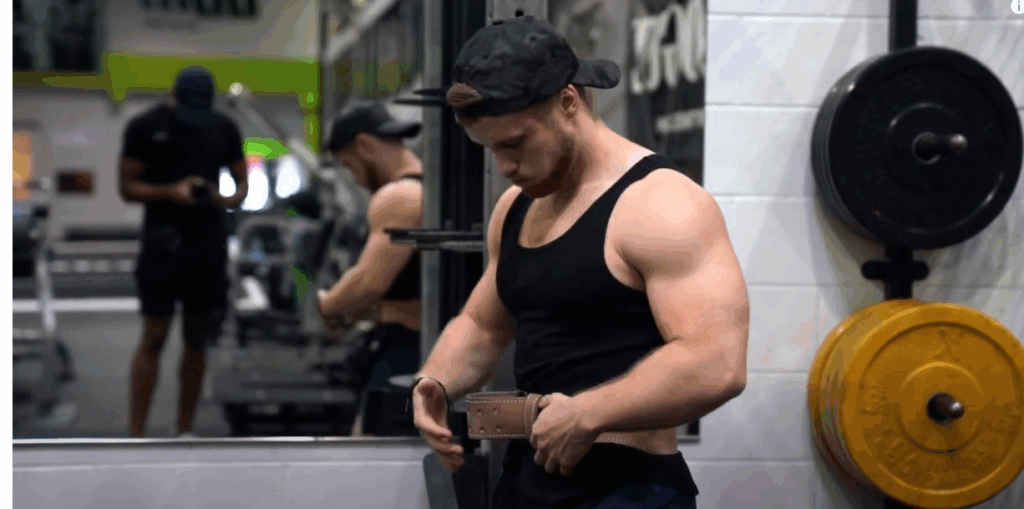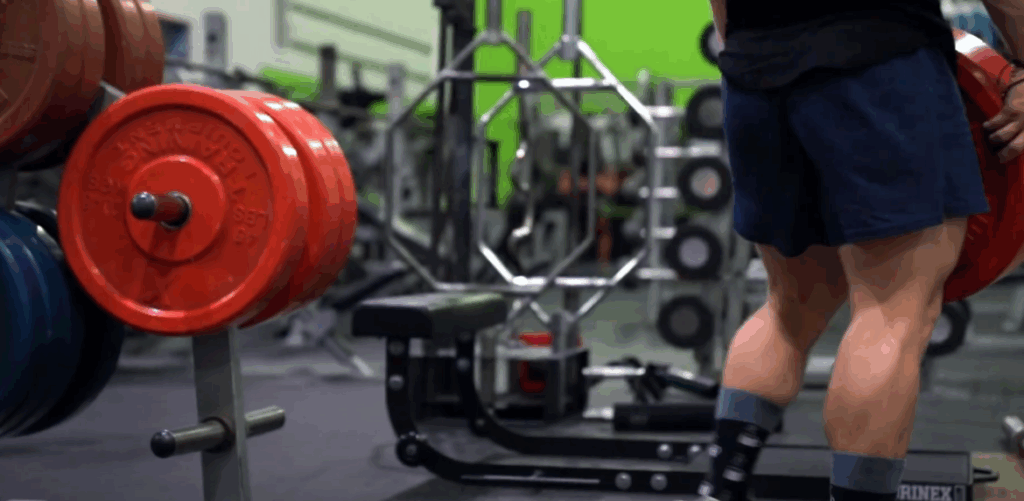If you’ve been following a push-pull-legs routine and are looking to level up your lower body training, this comprehensive session is for you. Designed with muscle growth and recovery in mind, this advanced lower body workout emphasizes intelligent programming, a strategic warm-up, and scientifically backed exercise selection.
Why Train Legs Twice Per Week?
Training your lower body once a week might work for beginners, but if you’re looking to maximize muscle growth, research suggests that working each muscle group twice per week yields better hypertrophic results. This is why, in this push-pull-legs cycle, both lower body days are intentionally programmed with different emphases to ensure complete development of the quads, hamstrings, glutes, and calves.

The Warm-Up: Mobility Meets Preparation
Before jumping into your working sets, it’s essential to prime the body. Begin with 5–10 minutes of low-to-moderate intensity cardio. Machines like the elliptical or stair climber are preferred here because they elevate your heart rate without placing excessive stress on the joints.
Follow this with a brief dynamic stretching session. This can include leg swings, bodyweight lunges, and hip openers. Avoid static stretches before lifting, as these have been shown to reduce power output. Lastly, spend 2–3 minutes foam rolling tight areas such as the adductors, glutes, and lower back. While the data on foam rolling is mixed, many lifters—myself included—report better mobility and reduced discomfort when incorporating it pre-workout.
Exercise 1: Barbell Deadlift – 4 Sets x 4 Reps
Though controversial in hypertrophy-focused circles, the deadlift still has its place. It’s true that the deadlift emphasizes the concentric portion (lifting the bar) more than the eccentric (lowering), and this could theoretically make it less optimal for growth. Additionally, it involves a shorter range of motion compared to squats and comes with a high recovery cost.
But those concerns miss the bigger picture. When combined with other movements that stress the eccentric phase and offer deeper ranges of motion, the deadlift becomes a foundational strength builder that carries over to nearly every other lift.
Use a weight that places you around 6–7 RPE—challenging, but not close to failure. For most intermediate lifters, this falls at roughly 75% of your 1-rep max. You can use a sumo or conventional stance depending on your biomechanical strengths. Contrary to common belief, both variations engage the glutes similarly, but sumo will hit the quads more while conventional emphasizes the spinal erectors.
Exercise 2: Bulgarian Split Squat (Deficit) – 3 Sets x 10–12 Reps
This unilateral movement pairs perfectly with deadlifts. It introduces a deeper range of motion, a pronounced stretch on the glutes and quads, and demands serious balance and coordination. Elevating the front foot increases the range even further, and slight outward foot placement allows for greater external hip rotation.
If you don’t have access to a suitable platform or find the movement uncomfortable, the front squat is a solid alternative. Research has shown that front squats can produce comparable growth stimulus to back squats, despite requiring lighter weights—making them ideal when you’re managing recovery from taxing lifts like the deadlift.
Exercise 3: Barbell Hip Thrust – 3 Sets x 15 Reps
Glute development requires targeted work, and the barbell hip thrust is one of the best tools for the job. High reps are prescribed here to emphasize time under tension and improve neuromuscular connection. Don’t rush to add weight. Prioritize mastering the movement: tuck your chin, keep your ribs down, and extend at the hips—not your lower back.
Evidence from EMG studies has consistently shown that hip thrusts generate high glute activation, particularly in peak contraction at full hip extension. Aim to make your form flawless before progressing in load.

Exercise 4: Goblet Squat with Controlled Eccentric – 3 Sets x 15 Reps
Here, we introduce a 3-second lowering phase to emphasize eccentric control. This slow descent helps build quad strength and improves squatting mechanics. Use a moderate weight and maintain an upright torso throughout. Elevating your heels can assist if you have limited ankle mobility.
Eccentric training with lighter loads has been shown to trigger similar hypertrophy to heavier traditional lifting, making this a joint-friendly and effective accessory move—especially when positioned later in the workout.
Exercise 5: Enhanced Eccentric Lying Leg Curl – 3 Sets x 10 Reps
The hamstrings respond exceptionally well to eccentric overload. If you have a training partner, have them apply extra resistance during the lowering phase of each rep. Otherwise, simply control the negative for 3–4 seconds. This slow descent taps into the hamstrings’ greater eccentric strength potential and maximizes the muscle-building effect.
Exercise 6: Seated Hip Abduction – 3 Sets x 30 Reps
High-rep hip abductions are an underrated gem for glute medius development. The glute med plays a major role in stabilizing the pelvis, and its neglect can lead to knee valgus (knees caving inward) during squats. This movement may also improve your squat and lunge mechanics by training the hips to resist inward collapse.
Focus on squeezing at the top of each rep, and consider lightly tapping your glutes to enhance the mind-muscle connection.
Exercise 7: Standing Calf Raise – 3 Sets x 10 Reps
Finish the workout with some focused calf work. Make sure you’re using a full range of motion—deep stretch at the bottom, explosive push to the top. Performing these barefoot or in minimalist shoes can help increase your range and stability. Pause for a second at the bottom and top of each rep to eliminate momentum and maximize tension.
Final Notes on Programming and Recovery
This workout strategically balances heavy compound lifts with targeted isolation work and eccentric-focused movements. It spreads recovery demands intelligently by alternating high-impact exercises (like the deadlift) with less taxing but equally effective accessory movements (like the goblet squat and leg curl).
By training quads, hamstrings, glutes, and calves in this structured fashion twice per week, you’re aligning with the current literature on training frequency for hypertrophy. It’s also important to keep your effort in check—don’t chase failure on every set. Training near, but not at failure, tends to provide better long-term results in intermediate to advanced lifters.

Looking for a Complete Program?
If you want this kind of structure laid out across a 16-week plan, there are many hypertrophy programs that incorporate the principles discussed here. Choose one with progressive overload, recovery modulation, and a mix of compound and isolation lifts—all grounded in scientific evidence and real-world lifting experience.
By applying these methods, you’re not only training hard—you’re training smart. Whether you’re building size, improving strength, or refining technique, this lower body session is built to move you closer to your goals.



